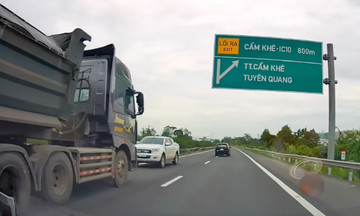Helsinki has reached a significant milestone: zero traffic fatalities in 12 months. This achievement was confirmed by city officials to the Finnish news outlet YLE.
This success wasn't the result of a single policy change, but rather a series of small but effective adjustments.
Earlier this year, Helsinki lowered the speed limit near schools to 30 km/h. Over half of the city's roads now have this speed limit. According to YLE, 50 years ago, these same roads had a 50 km/h speed limit.
 |
Pedestrians crossing an intersection in Helsinki where tram lines intersect. Photo: Jussi Hellsten |
Beyond speed limit adjustments, infrastructure for cyclists and pedestrians has been significantly improved. Automated traffic monitoring systems (speed and red-light cameras) have also been added. These measures are complemented by increased police patrols, a robust public transport system, and modern safety technology in vehicles.
Fatalities aren't the only statistic decreasing. Traffic-related injuries in Helsinki have also dropped sharply, from nearly 1,000 annually in the 1980s to 277 last year.
Helsinki's current traffic safety strategy, covering the period from 2022–2026, is nearing completion. This strategy focuses on improving safety for children, teenagers, pedestrians, and cyclists by using safer crosswalks and smarter intersection design.
Much of the plan is data-driven, supported by improved traffic monitoring tools.
Traffic safety education has also been improved, with responsibility shared by everyone on the road—drivers, cyclists, and pedestrians alike.
To compare Finland's traffic situation with the US, Motor1 reported over 40,000 traffic fatalities in the US in 2023. Annual data from the Insurance Institute for Highway Safety (IIHS) indicates that traffic fatality rates have generally declined since the 1970s, reaching a low in 2014, with 10.3 deaths per 100,000 people. Since then, the figure rose to a high of 13 deaths per 100,000 in 2021, before decreasing to 12.2 in 2023.
In 2014, New York City launched Vision Zero, a series of policies designed to eliminate traffic fatalities. These policies appeared effective, with deaths steadily declining in the city until the Covid-19 pandemic, when fatalities spiked. During the pandemic, empty streets encouraged speeding and driver complacency, leading to more serious accidents.
In 2024, there were 251 traffic fatalities in New York. However, 2025 marked the lowest number of traffic deaths in the metropolitan area, with only 87 cases.
My Anh











